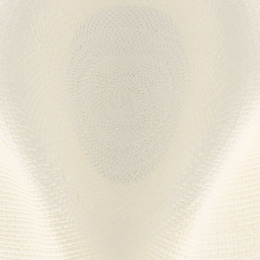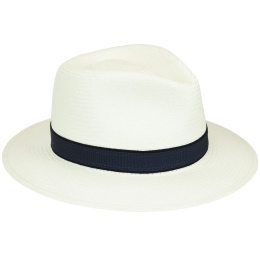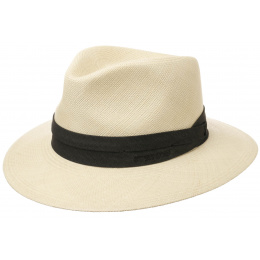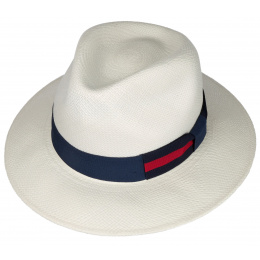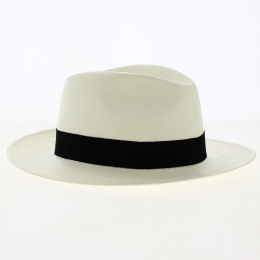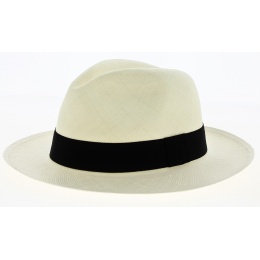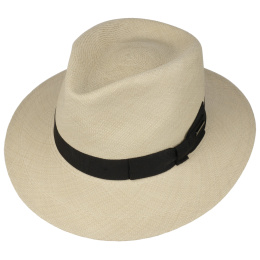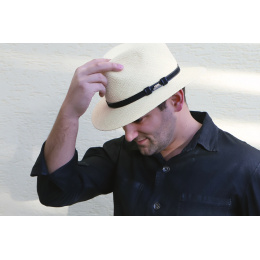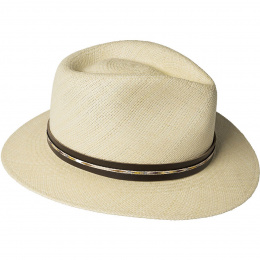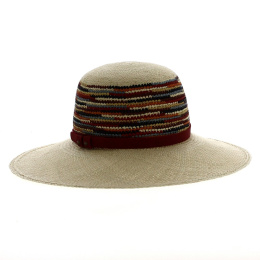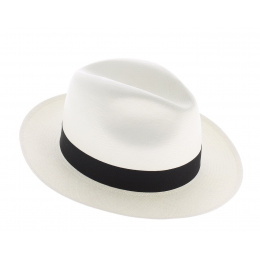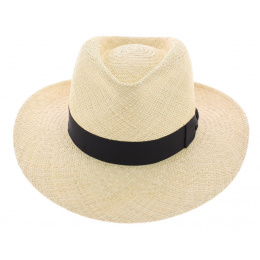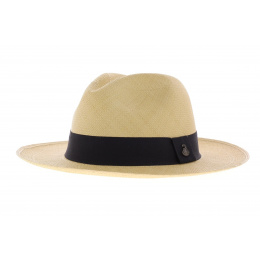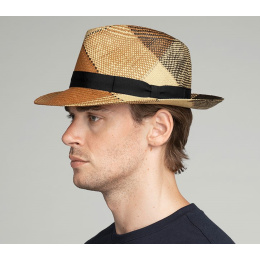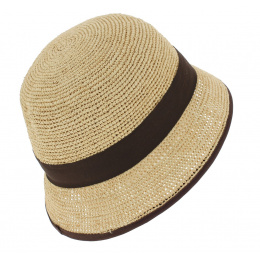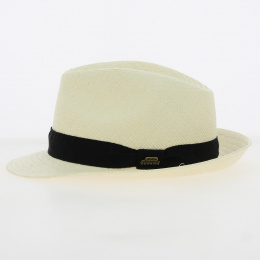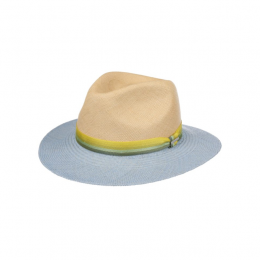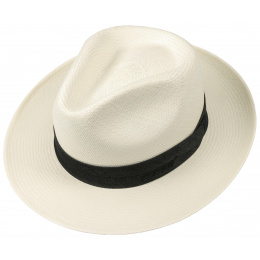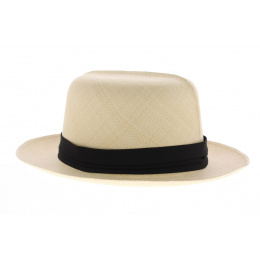

Our authentic PANAMA hats from Ecuador are suitable for men, women and children alike. The traditional Panama hat can be bleached, natural or colored.
Panama Hat, Panama Hat Child, Panama Hat Woman, Panama Hat Man, Panama Hat Montecristi
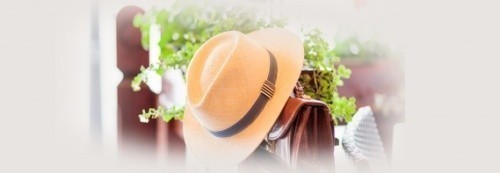

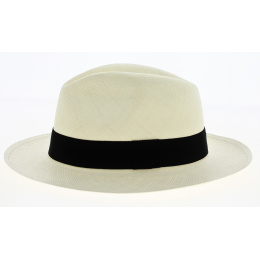
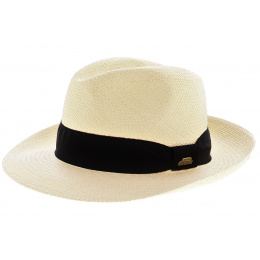

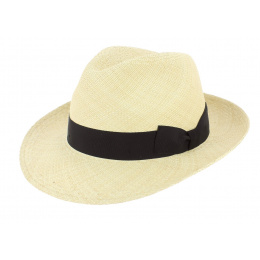
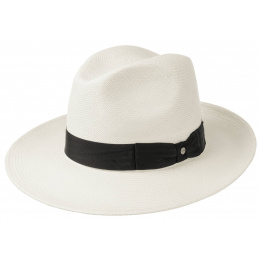
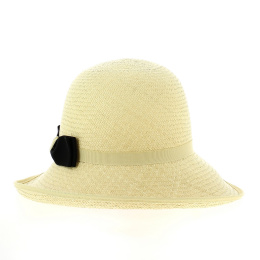
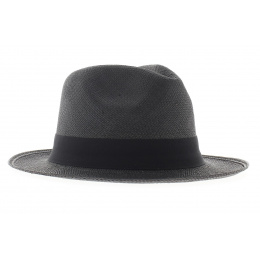
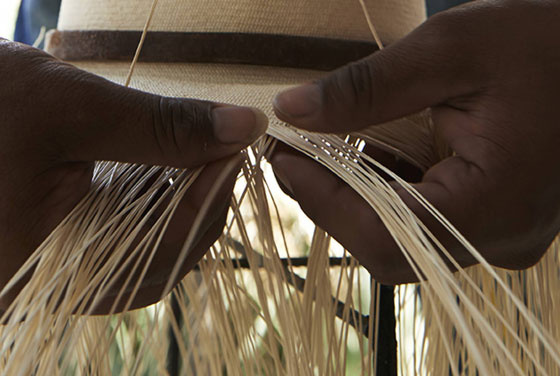
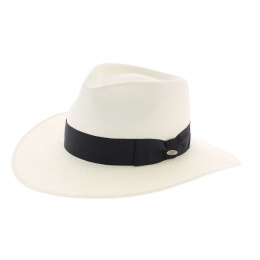
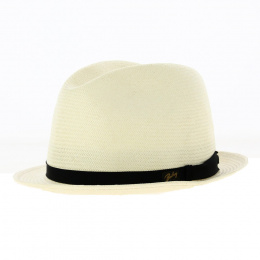
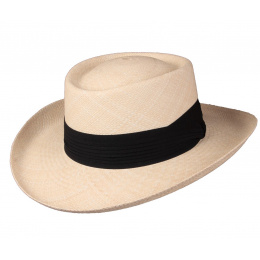
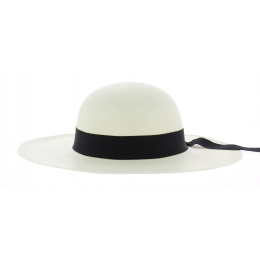
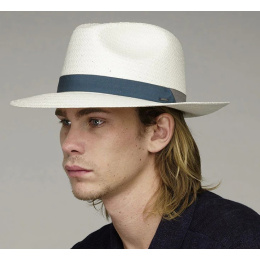

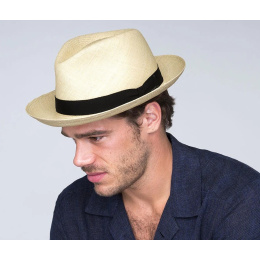


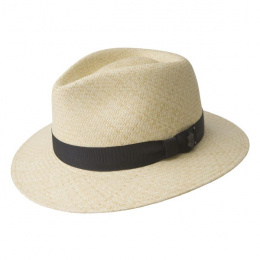
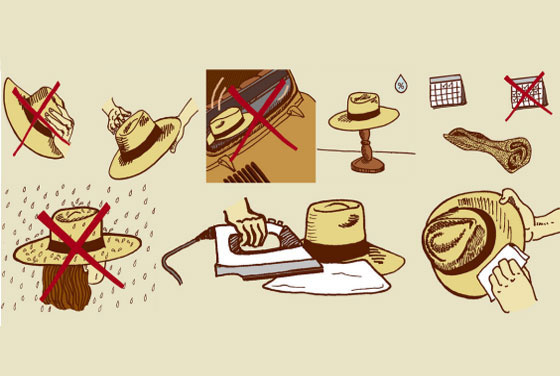
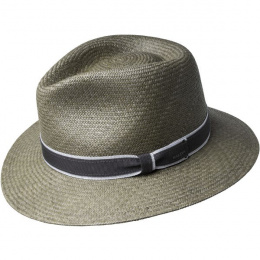
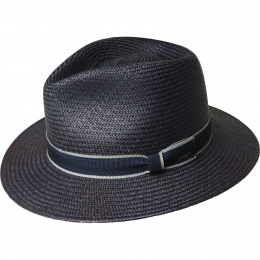
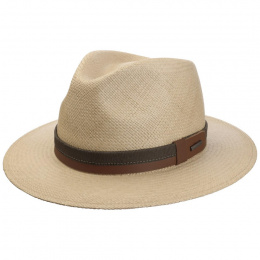
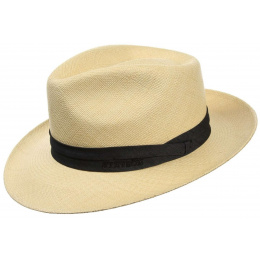


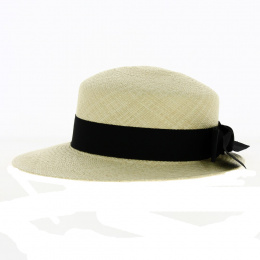
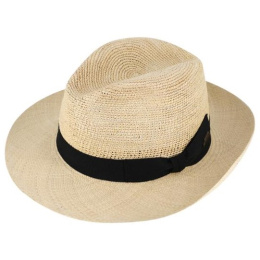

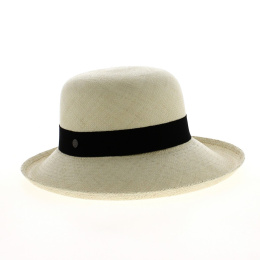
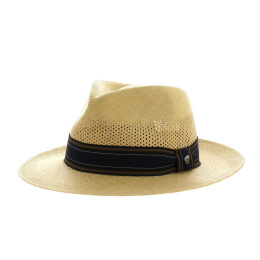
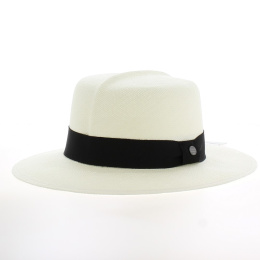

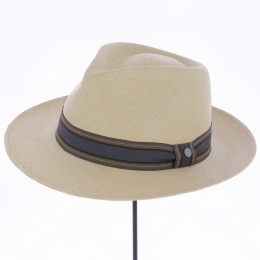
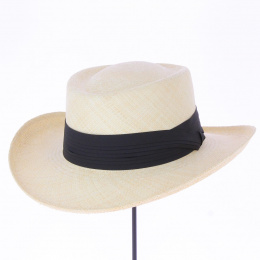
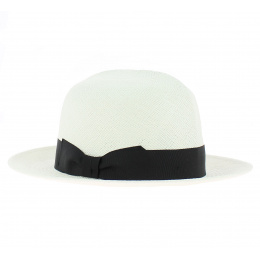
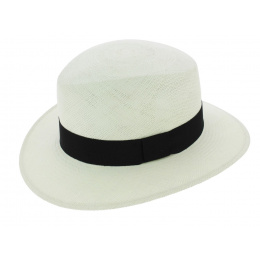
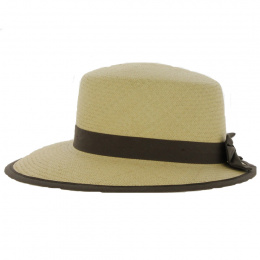
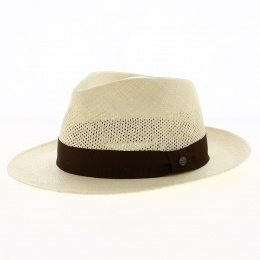
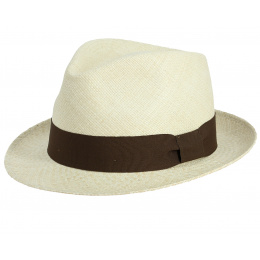
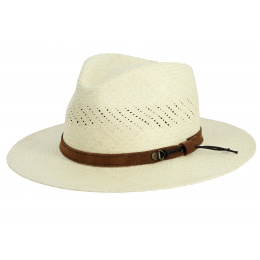

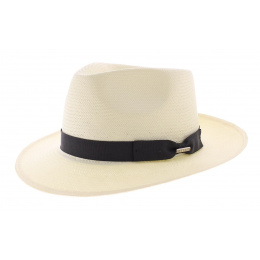
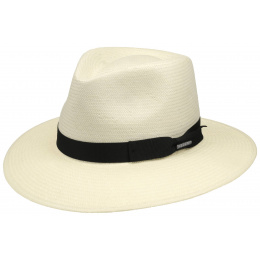
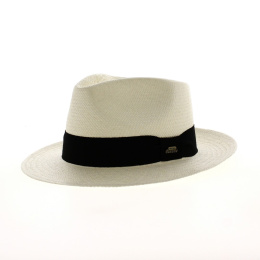
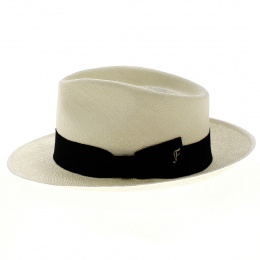
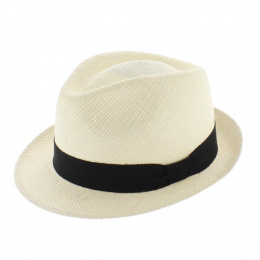

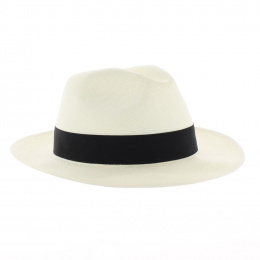
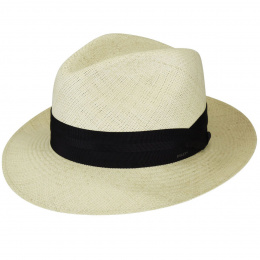
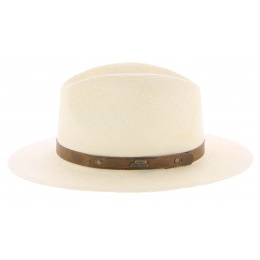
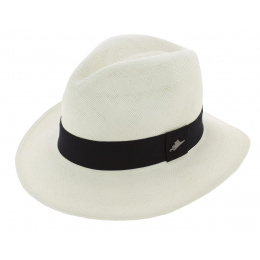
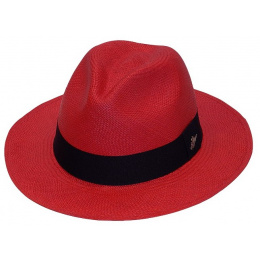

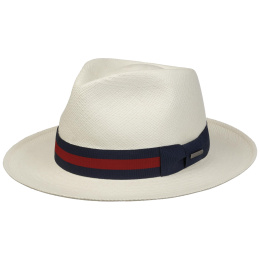
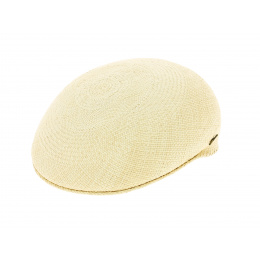
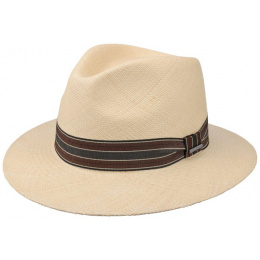
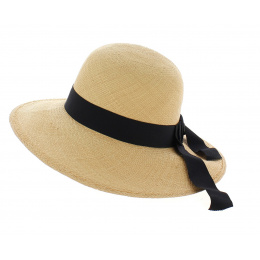


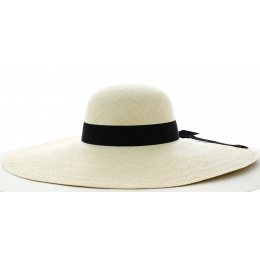
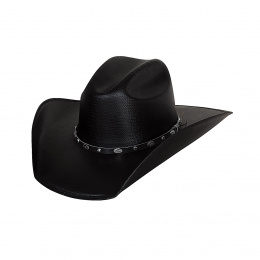
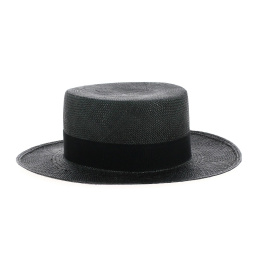
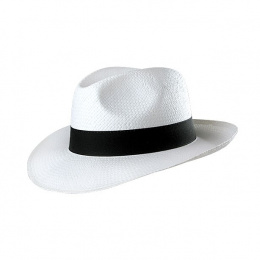
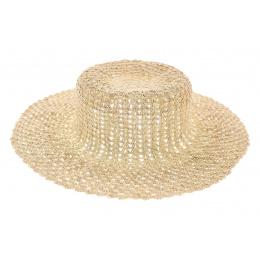
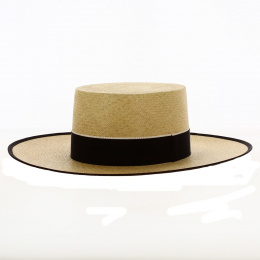

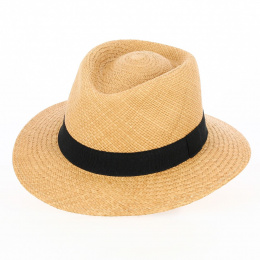

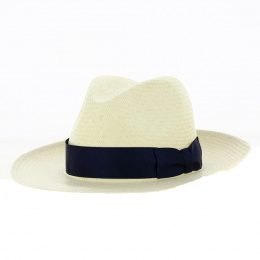
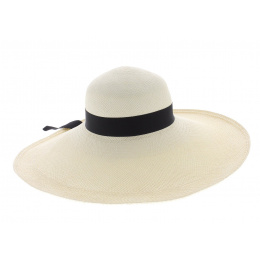
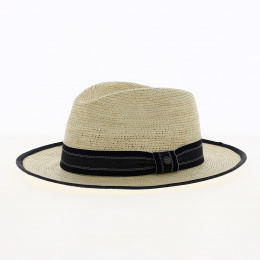
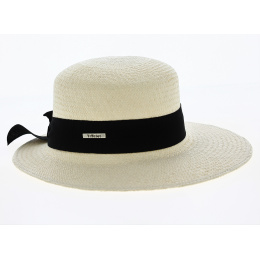
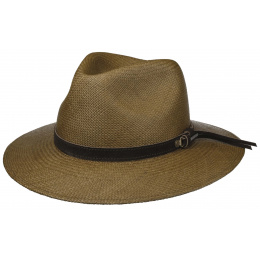
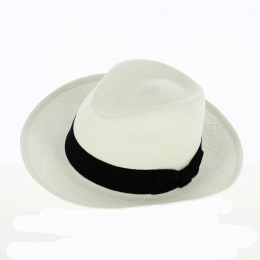
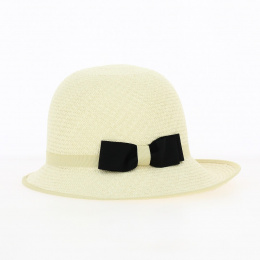
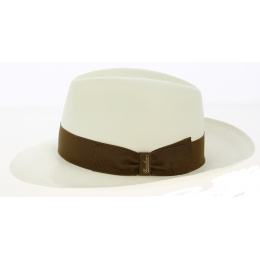
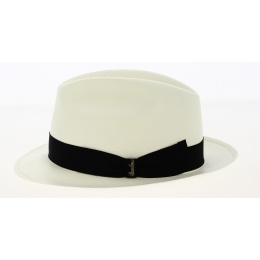
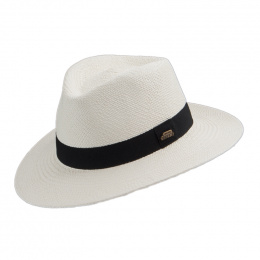

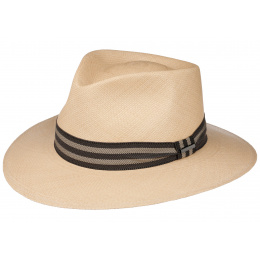
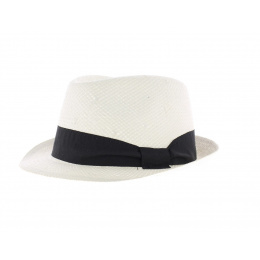
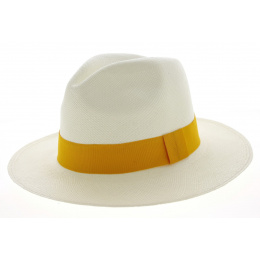
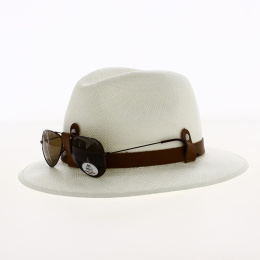
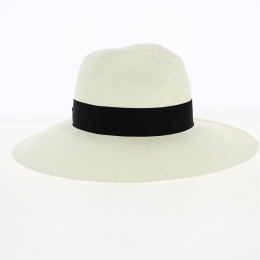
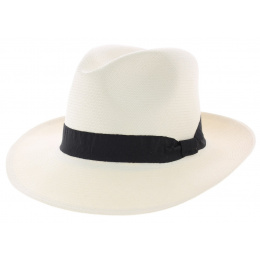

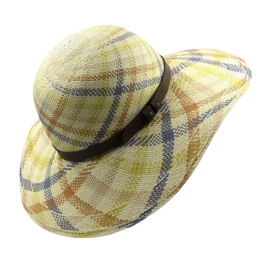
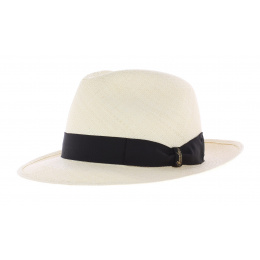
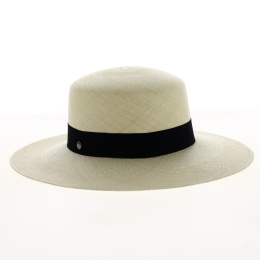
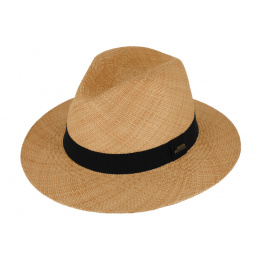
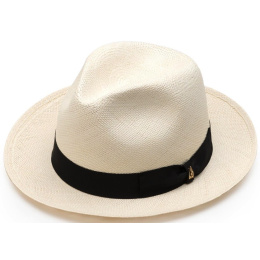
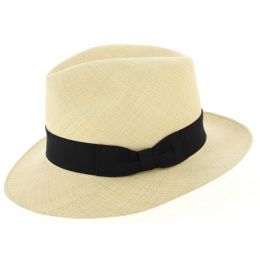

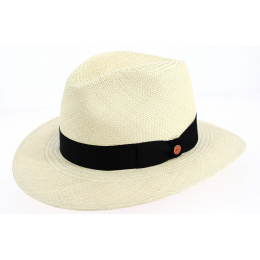
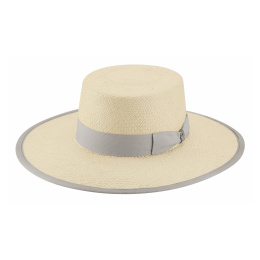

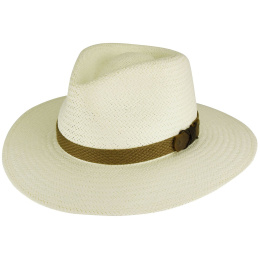

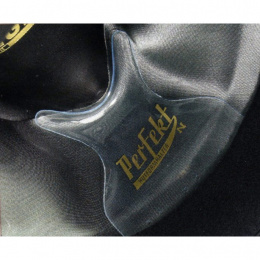
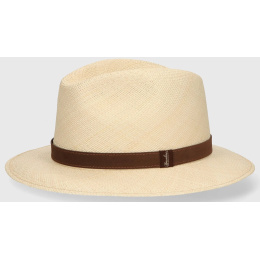
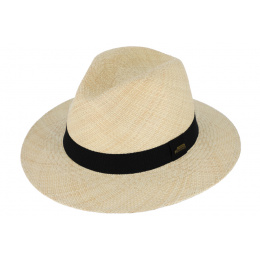
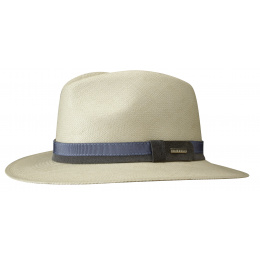
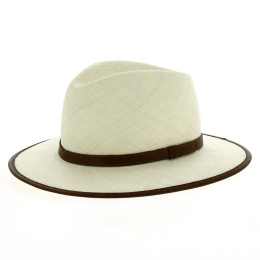
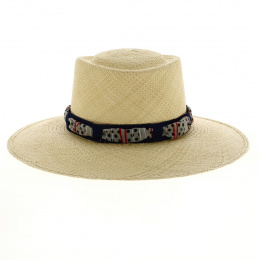

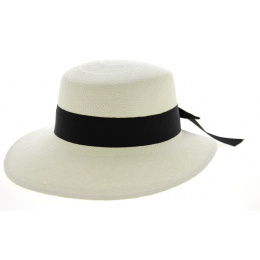

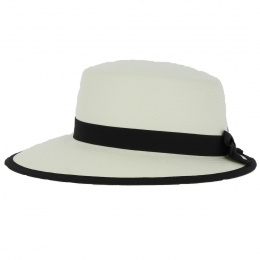

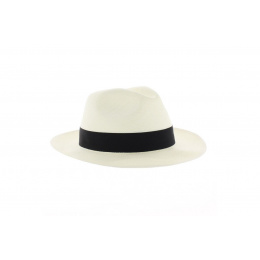
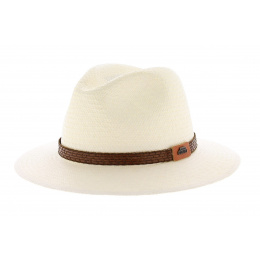
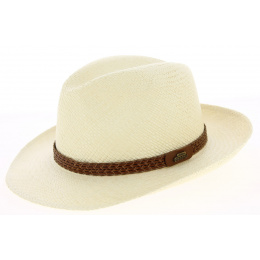

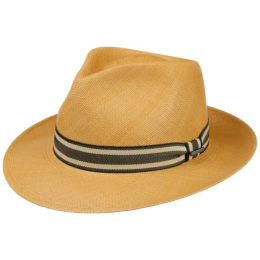
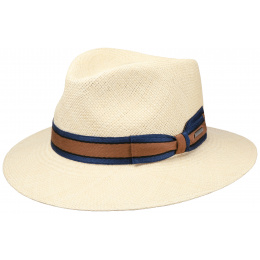

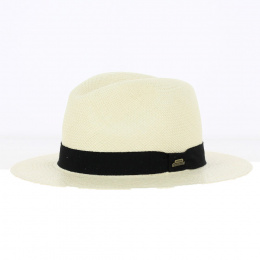
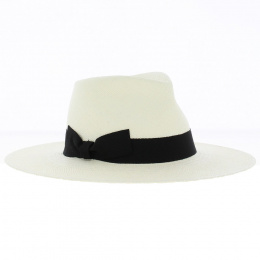
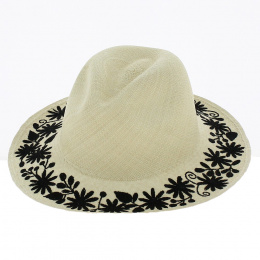
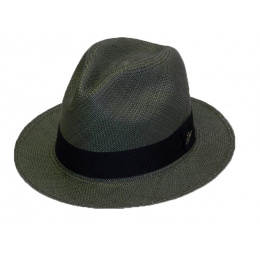
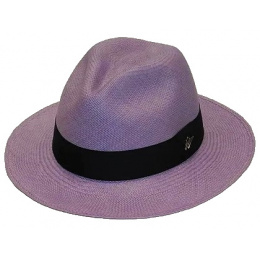
When it rains, choosing the right hat can turn a gloomy day into an opportunity to show off your sense of style while staying dry.
Although the hat is no longer an obligatory part of a man's wardrobe today, the head covering contributes greatly to improving style, both in terms of form and function. Unlike the plethora of hat styles to choose from in winter, there is really only one classic summer hat that has stood the test of time: the Panama hat. The "Panama" is a material, not a form. Indeed, the Panama hat is made in the shape of a hat like the domed shape but also a baseball cap. There are also panama hats in the form of a hat, bell, traveller.
However in common parlance; a "Panama hat" is a light-coloured hat with a black ribbon, finely woven from the straw of the toquilla palm tree in South America. Although the name implies that the origins of this world-famous hat are in Panama, the original Panama hat has always been made in Ecuador. There it is better known as the sombrero de paja toquilla, or simply "straw hat". The elegant shape of the Panama hat and its light weight and breathability make it the ideal choice for warm and sunny weather, and that is why a Panama hat should be in the wardrobe of every headwear enthusiast.
Panama hats are fashion accessories that combine lightness and comfort to protect yourself from the sun with style. It is the essential traditional hat, for man or woman, to take on holiday with your shorts and sunglasses. Panama hats offer both comfort and coolness during the summer.
The Panama hat is distinguished by its raw material, made from the leaves of a South American palm tree called "paja toquilla" and its traditional hand weaving.
Panama hats have been woven in Ecuador since the early 17th century, when Panama hats were worn and marketed locally. The industry developed steadily and spread over the following centuries. In the 19th century, they were exported out of Ecuador for distribution in Europe but also in America and as far away as Asia. History tells that as early as 1834, gold rush miners who travelled to California via Panama bought Panama hats there, earning them the misleading nickname "Panama". Word of mouth and the steady flow of miners through Panama supported the term and the popularity of the hat, but the hat did not reach a wide audience in the United States until Theodore Roosevelt was photographed wearing a Panama hat while visiting the Panama Canal construction site. By 1944, Panama hats were Ecuador's number one export product. In the 20th century, interest in Panama hats continued as movie stars, politicians and fashion personalities wore Panama hats in warm weather. Hercule Poirot, Rober Redford in Great Gatsby in 1974, and Gregory Peck in To Kill a Mockingbird are some of the characters who wore this famous hat
Today, the authentic Panama hat industry is centered in Cuenca, Ecuador, where production is primarily focused on quantity rather than quality. Large companies manufacture thousands of hats and sell them all over the world. If you come across a hat labeled as "authentic Panama", it probably comes from one of the factories in Cuenca. The tradition of hand weaving Panama hats is still alive outside of Cuenca, and the most famous center for the production of hand woven hats is probably Montecristi. However, many say that the best Panama hats come from this small town, but the coastal town of Calle Pilé, in the western part of Ecuador, also boasts the best hat producers.
This hat from Ecuador is affordable for all budgets: from the cheap Panama hat at 39 euros to the panama brisba hat, to the Montecristi panama hat which can reach more than 10000 euros. Importing directly from Ecuador we are able to offer cheap panama hats in bulk and directly from our Ecuadorian artisans.
The shape of the panama can be a panama fedora hat, which is still the most "classic" and most worn shape in the world; but there are also panamas in trilby shape, floppy hat but also in panama cap shape.
All Panama hats were originally hand-woven, using local toquilla palm straw, around individual hat shapes. Like most basic wardrobe items, the demand for hats eventually led to the industrialization of the manufacturing process. Today, most Panama hats are machine-woven in modern factories. While the factory production of Panama hats is rather uninteresting, the hand weaving process is fascinating. It is an art that is on the verge of extinction and deserves to be appreciated. This is why in 2012, Panamanian hand weaving was even added to UNESCO's list of intangible cultural heritage.
The process begins with straw, which is found only in the equatorial forests of Ecuador. Like a rare cuvé grape, the best plants are found in a microclimate that is ideal for growing toquillas. The heart of the plant, the cogollo, is the perfect material to create fine straw for a high quality Panama hat. Dozens of cogollos may be needed to create a single hat, and each one is harvested by hand from wild plants in the forest. The stems of the plant are then carefully separated by hand and boiled briefly before being dried. Once dried, the fibres are bleached in sulphur smoke and then divided into even finer straws.
The weaving begins with the most central part of the hat: the crown or cap of the hat. It is then woven outwards in a circular pattern. Weaving options include the "liso" chevron and the diamond "brisa" pattern, but hand weavers prefer the liso for its more elegant appearance. The "brisa" weave is preferred by major manufacturers for economic reasons. Once the wreath is large enough, it is placed on a tripod at waist height, surmounted by a crown-shaped hat block. Once the weave extends over the edges of the block, the weaver places several more blocks on top of it, along with a small cushion. This is done by both men and women; he or she then leans over the padded tripod, using the weight of his or her body to hold the weave in place. This is one of the most difficult jobs. It can take months to weave a single very thin hat. According to experts like Brent black the record is 8 months for the production of the most beautiful hat known
Once the weaver approaches the brim, the unfinished hat is passed on to a handful of additional skilled artisans for finishing. First, a craftsman finishes the brim with a loose weave at the back. The second craftsman tightens the back weave. The third craftsman cuts off the excess straw from the edge. For a very fine hat, this straw will be kept so that any necessary repairs can be made with the same straw. The hats are then washed and bleached before being sent to the fourth craftsman, who then hammers them with sulphur powder to soften them. Finally, the hats are trimmed and ironed to obtain a shape that begins to look like a finished hat. Last but not least is the last step, which is blocking (or shaping the hat into the shape). In many cases, this is usually done by the buyer.
The Panama hat is a very resistant headgear, however it is advisable to keep it in a humid place to keep this resistance. It is not advisable to leave it on the back deck of your car. When you take it off, do not pinch the top of the hat, this repeated gesture could break it and make it unrecoverable ..
During winter, try to moisten it before storing it, preferably in a cool place, otherwise the Panama hat will become brittle.
To clean the Panama hat material we advise you to clean the inside coarse grain with cold water and ammonia. For the Panama part opt for a wet wipe. Its maintenance is very simple, it can be done with only one wipe. It is advisable not to wear it in case of rain to avoid staining it and not to let it fold for more than 48 hours
Here are some other tips that may be useful
- If the hat gets slightly stained or dirty, a good way to clean it is to use an eraser. Never use water or alcohol.
- For stronger stains, we recommend the use of baby wipes. Be careful, any inappropriate chemical product tends to damage the fibres of the hat.
- Do not let sweat marks get stuck in the straw, we advise you to clean it regularly with a white cotton cloth and mild soap or ammonia.
If your panama hat loses its shape, you can regain it with the help of steam as if you were reshaping it by hand over a pot of boiling water.
- If the wings become deformed when rising, a good strategy to restore it to its original shape is to use a steam iron, placing a cloth between the hat and the iron.
- If the cut is deformed or crushed it is advisable to take it to a hat shop to make the arrangement so that the hat does not lose its original shape.
- To avoid breaking the top of the cap, never take and pinch your hat from the top. The cap reinforcement can also be a good solution against breakage. We also recommend using a glue gun to make a bead on the inside of the cap to prevent the hat from cutting into the top of the cap.
A few tips on how to fold your panama hat. First of all, make sure that the chosen model can be folded. Not all panamas are foldable, and folding it in this case could completely deform it.
Step 1: Roll but do not fold. Panamas can be rolled up but be careful not to fold them as this could damage the mesh (crack the fibres).
Step 2: Only roll up your hat to wrap it. The Panama hat will take even longer to return to its original shape if it has been rolled up too long. That's why it should only be rolled up when travelling.
Step 3: In general, the finer the mesh, the easier the hat will be to roll up. It is therefore not advisable to roll up a hat of lower quality. Their straw fibres are thicker and may crack more easily.
Step 4: The Panama hat needs a little ambient humidity to maintain its suppleness. Do not roll up a hat that is too dry. If the panama hat is exposed to hot and dry weather for too long, it can dry out so much that it can crack if rolled up.
Step 5: Always keep your hat in its original shape... to avoid breaking it.
To recognize the true traditional Panama hat, you must check the presence of a rosette at the top of the cap. In this case, it is an authentic Panama hat.
The real Panama hat is hand woven, it has a rosette and a unique braiding. This rosette corresponds to the beginning of the weaving of the hat or cap. A panama hat is foldable and rollable in Ecuador but in our European latitudes, the fiber tends to break due to the climate being too dry and not wet enough contrary to Ecuadorian temperatures.
The cheap panama hat can be a real panama or a fake panama like the paper panama which is made from celullose or Japanese panama. The price of a real panama hat therefore varies from one finish to another depending on its fineness and especially its fiber quality.
Check out our specially written article to help you recognise the differences between straws: https://www.chapellerie-traclet.com/fr/blog/les-paille-panama-raphia-papier-quelles-differences-n138
Where'd the panama hat come from? The origin of the Panama hat is Ecuador; a hat handmade by local artisans.
The quality of a Panama hat is determined by a number of factors, including the straw and the weave.
Hats are often classified as "Montecristi fino" or "Montecristi superfino", etc. Some manufacturers and retailers provide numbered categories, e.g. from 1 to 20, but these terms are not universally recognized. This supposedly implies the fineness of the weave of a Panama hat, but unfortunately these terms are not clearly defined and can therefore be used to obscure or inflate the actual quality of a hat. In fact, the terms and grades are used in the same confusing way as super figures in the fabric trade and therefore do not really help in assessing the quality of a Panama hat. Rather than having to rely on uncertain terms, it is better to simply count the weaves per square inch.
In addition to the quality of the straw and weave, some consider another quality criterion: the number of concentric circles - the vueltas - that are found on the crown when the hat is held against the sun or other intense light. It is assumed that the more circles, the higher the quality. It is generally accepted that counting weaves per square inch gives much more reliable results than counting vueltas. For daily use, a hat with 350-400 threads per square inch is perfectly sufficient.
The most beautiful hats have more than 2000-4000 weaves per square inch, which takes the hatmaker between four and eight months to produce such a masterpiece. Considering the time it takes to produce this work of art and the fact that there are only a few people left who can weave so finely, it seems obvious that this quality of hat will not be cheap
The panama hat, a hat from Ecuador
Very easily recognizable by its foldable brim and its black ribbon, with or without a hatter's knot, the panama hat remains above all a trendy and timeless hat. In the 20th century, panama hats conquered celebrities such as Paul Newman, Humphrey Bogart or Sean Connery, but its origin is much older..
This hat comes, despite its name, from Ecuador. The oldest traces date back to 4,000 years before Christ. Like most hats, it was used to protect its owners from the torments of the sun. The panama hat was quickly integrated into the traditional Ecuadorian costume. However, it was not until the 16th century that a trade was established and the sale of panama hats began to spread along the Ecuadorian coast. The panama weaving method was developed to meet the demand from 1830 onwards. Notables from the Andes decided to train the locals in weaving techniques in order to increase their production. Their fame will spread to the rest of the country from the 19th century, as well as to the United States. It is at this same period that European workers, in charge of the construction site of the Panama Canal, popularize this hat in their respective countries and rename it panama hat
The real Panama hat is therefore made in Ecuador, contrary to what its name might lead us to believe. Handcrafted from Ecuadorian toquilla straw, it is a high quality product with beautiful details. The straw that constitutes it, entirely, comes from a palm leaf that grows only in Ecuador. Once harvested, the straws are then dried in the sun and bleached. It is then that the know-how of Ecuadorian artisans takes place during the weaving process. The straws are sorted and then woven until the expected result is obtained: the panama hat. A meticulous work that can last up to 8 months!
Panama hats are highly appreciated for their details and finishes, but above all for their sturdiness and timeless style
For more information, here is a link to our article entirely dedicated to the making of panamas: https://www.chapellerie-traclet.com/fr/blog/ou-sont-fabriques-les-vrais-panama-n110
Its popularity comes from its simple elegance. Very light, it is also very flexible which makes it more solid. Its raw material, "la paja toquilla" is a plus against the hot summer temperatures and its lightness is appreciated at its true value.
Resolutely unisex, this hat appeals to both women and men. Its racy elegance gives a final touch to your outfit. We offer you a range of more than 100 different hats in natural panama or straw fibre. From the classic hat in beige (natural colour) or matching white with its black ribbon to more contemporary models, you will find no less than 12 different shapes and 13 different colours in our online shop
A model that can dress your hair as well as your head
The Panama hat has the advantage of being a hat synonymous with elegance and chic. You will be able to wear it with a casual outfit as well as with a very dressy one. This model will bring the final touch to your silhouette without any effort.
A product that is always in fashion and that you can't wait to put on your head!
The style of a Panama hat is determined by two main characteristics: the shape and size of the brim and the crown/crown. Although there are an infinite number of hat variations, here are some of the more classic hat profiles that you should consider.
And many more, with a more or less wide brim depending on the model chosen... There are also panama hats to protect you from the sun in a relaxed way!
Beside the shape, the color of the classic panama hat is white but we also propose the black panama hat but also the grey, red, brown, green panama hat....
And you, what will your panama be?
Wearing a Panama hat can be all year round when the weather is nice. You can wear it with a suit, but you can also wear it with a simple swimsuit, maybe with a simple polo shirt, because the main goal is to keep your head out of the sun and it is a summer hat par excellence. For this reason, you can really wear it with everything in your wardrobe. It is probably the most versatile hat you will ever own.
Many stars wear it at the beach as well as at prestigious ceremonies. Whether it's the summer trend on the heads of Brad Pitt and Diane Kruger, vintage with Jean-Jacques Belmondo or timeless with Michael Jackson, this all-purpose hat can be worn for any occasion!
When shouldn't you wear a Panama hat?
You should not wear a hat when you are in places of worship or in private homes, unless of course it is a public building such as a subway station. In that case, then you can keep it on. In general, it is not a good idea to wear a hat and sunglasses, however, with the Panama hat it is slightly different because you wear it when it is really sunny outside and even if the brim is wide; the chef's hat cannot protect your face. Just wear sunglasses, even Prince Charles does.
We hope we have answered your questions about the Panama hat. If you are looking for more detailed information about the Panama hat, I recommend the book Panama: A Legendary Hat by Martine Buchet


